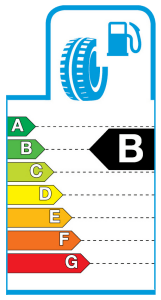Guide to Tyre Wall Markings
Guide to Tyre Wall Markings
Discover more about our extensive range of professional services. We constantly update this page, but if you still can’t find what you’re looking for, please feel free to get in touch with us – we will be more than happy to help.
Guide to Tyre Wall Markings
Have you ever wondered what all of the writing on your tyre wall means? Perhaps you know where to spot the load index and size information, but do you know what all of the other symbols mean? Can you find out when your tyre was manufactured, or where?
The markings on tyre walls are mainly there for two reasons; firstly, to indicate the size and specifications of the tyre, and secondly, to prove that the tyre has passed European and other country safety standards.
We make it our business to know everything there is to know about tyres, and we can advise you on every aspect of tyre safety, specification and suitability. We stock a wide range of tyres to suit all budgets, and can supply and fit them for you whether you need replacement tyres locally.
Here, we’ve teamed up with the experts at Michelin to bring you a guide to tyre wall markings.
Tyre Labelling in More Detail
Fuel Efficiency
Tyres are responsible for between 20 and 30% of a vehicle’s fuel consumption. As a tyre rolls, it uses energy and so a tyre that has a lower rolling resistance will use less energy, and this has a direct impact on fuel efficiency and CO2 emissions. Choosing tyres ranked A (best) over tyres ranked G (worst) can reduce fuel consumption by up to 7.5%. This equates to a typical annual fuel saving of 120 litres or £168 (based on 12000 miles and £1.4/l). Currently, D is not used on the scale to provide a clear distinction between higher and less efficient tyres.
1. Type of Construction
Nearly all modern tyres are of Radial construction, as in this example.
2. Load Index
A numerical code referring to the maximum load the tyre can carry at the speed indicated by its speed symbol. In this example, the code is 91, therefore the maximum load per tyre is 615kg.
See the table below to find out specific load index details for each code:
Load Index - Kg
65 290
66 300
67 307
68 315
69 325
70 335
71 345
72 355
73 365
74 375
75 387
76 400
77 412
78 425
79 437
80 450
81 462
82 475
83 487
84 500
85 515
86 530
87 545
88 560
89 580
90 600
91 615
92 630
93 650
94 670
95 690
96 710
97 730
98 750
99 775
100 800
101 825
102 850
103 875
104 900
105 925
106 950
107 975
108 1000
3. Speed Symbol
A letter which indicates the maximum speed at which the tyre can carry the load corresponding to the Load Capacity Index. In this example, the symbol is V, therefore the maximum speed is 149mph or 240km/h. Common speed symbols in the UK are ‘S’, ‘T’, ‘H’, ‘V’, ‘W’ and ‘Y’
See the table below to find out specific speed ratings for each symbol:
Speed Symbol Approx MPH Approx KM/H
Q 99 160
R 106 170
S 112 180
T 118 190
H 131 210
V 149 240
VR 131 210
W 168 270
Y 186 300
ZR 149 240
4. Uniform Tyre Quality Grading Markings
Required by USA consumer information regulations (not required in UK).
5. Country of Manufacture
In this example, Made In Great Britain
6. Brand Name
In this example, Energy
7. Location of Tread Wear Indicators
(This marking is not on all tyres.) Tread wear indicators are moulded into the base of the main tread grooves and are set at the minimum legal depth of 1.6mm. These act as a visual warning when the tyre tread starts to approach the minimum legal depth. On Michelin tyres, a small Michelin man is used instead of “TWI”
8. North American Department of Transportation (DOT) Markings
Compliance symbol and identification number (not required in UK).
9. Manufacturing Date Code
These numbers represent the week and year the tyre was made. The first two numbers are the week, the second two are the year. In this example, 1607 means the 16th week of 2007.
10. European ECE Type Approval Marks and numbers.
This proves that the tyre has been tested and passed European safety standards.
‘S’ = Sound (the tyre complies with EC noise directive).
11. Tyre Construction Details
12. Commercial Name and Identity
In this example, Michelin
13. Max Load/ Pressure Information (Not required in UK.)
Not to be used for setting pressures. Use the vehicle manufacturer recommended pressures.
14. Indicates exterior sidewall on asymmetric tyres (For fitting purposes.)
15. Tyre Size Designation
This indicates the width, height and construction type of the tyre, and the diameter of the wheel it is designed for. In this example, 205/55 R 16 means:
205 - the nominal width of the tyre’s cross-section in millimetres.
55 - is the ‘aspect ratio’ - the ratio of the sidewall height to the cross-section width.
R - stands for radial construction.
16 - stands for the nominal diameter (in inches) of the wheel that the tyre is designed to fit.
If you are in any doubt about the markings on your tyres, or would like advice on anything related to tyres, you can get in touch with one of our experts by calling the telephone number displayed at the top of this page.
article provided by Michelin
Our Brands
We offer a full range of tyres, from world renowned brands such as: Continental, Goodyear, Dunlop, Bridgestone, Michelin and Pirelli, to high quality mid-range and budget brands for the majority of cars, vans and 4x4’s on the UK roads today.




